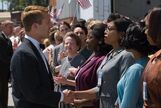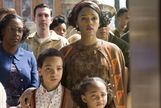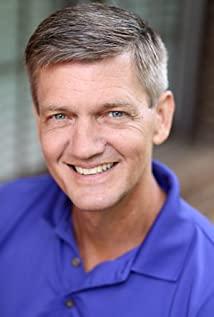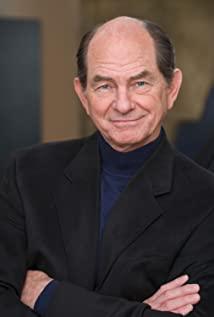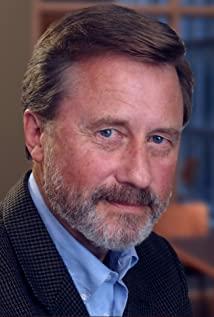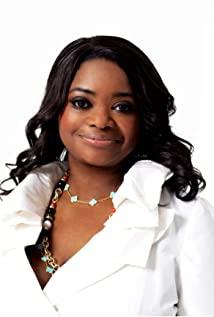Originally posted on the personal public account: a mountain monster (or search for herringcat)
Mary Jackson and Dorothy Vaughan's experience working for NASA while the United States was still under apartheid in the 1960s. In 1954, the U.S. government declared apartheid illegal, but the corresponding improvement measures have not been effective. In 1955, the Montgomery bus incident in which a black seamstress refused to give up her seat for whites took place, which became the fuse of the civil rights movement. In the following ten years, the black rebel movement spread all over the north and south. The domestic affirmative movement is surging. In the international situation, the United States is in the early stages of an alien race with the Soviet Union. The two sides exchanged satellites, eager to make their country’s astronauts become the first human beings to enter space. And NASA is under the dual influence of these two backgrounds. What is even more implied is that NASA was originally an organization that represented American dreams, the exploration of the universe, the curiosity of the unknown, and even the dreams of all human beings. For blacks, equal rights are a dream and pursuit since the era of the slave trade. The screenwriter’s performance of segregation is great, and he did not directly express it from a critical perspective, but tried to make people realize the irrationality of segregation in laughter in a playful way. As an invisible background, apartheid quietly covers the entire film like a cage, embodied in the details. For example, at the beginning of the film, the car of the three female owners broke down on the side of the road when they were interrogated by the white policeman. After the police indicated that they could clear the way for them, Mary drove closely to the police car, creating a black woman driving after the white policeman. Fake appearance; every time a white male NASA employee sees the surprise and silence of a black female colleague; after being promoted, Katherine runs between the main building and West Computers in high heels to go to the bathroom. Set up isolated toilets, and the distance between the two buildings is 20 minutes). This running scene is repeated at the end of the film. This time, a white male colleague who accompanies Katherine to run is out of breath. The ubiquitous contrasts and echoes in the film make people enjoy the film and feel the heaviness of the historical background. Even in the forefront of NASA, apartheid is so serious. Katherine played by Taraji Johnson is a mathematician with explosive calculation ability. He entered high school at the age of 10 because of his super calculation ability. He was exceptionally promoted to the main building to participate in the core work. With his excellent computing ability, Katherine broke the barrier of isolation step by step, won the respect and trust of working partners, and later participated in the Apollo moon landing plan. Katherine's overall personality (toughness and perseverance in the face of work, warmth and love in the face of family) is very similar to Taraji's previous TV series roles. Sister Ka in POI and Cookie in Empire are fierce when fierce, but okay. charming. A line in the middle of the movie broke out, and it was so tense that I was about to come out. Octavia Spencer, with the same type of "The Help" (The Help) won the Oscar for the female match, this time acting as a worker who always wanted to be a supervisor but was rejected for various reasons because of his skin color, and finally relied on his own learning Ability to lead all black female employees of NASA to become the first team to master IBM computer computing skills. Janelle Monáe, who just starred in the critically acclaimed Moonlight, plays the beautiful and more beautiful Mary Jackson, who is NASA's first black female engineer. Coincidentally, last Christmas, I was watching NASA's campus in Orlando, Florida, and this Christmas Eve, I was watching the story behind NASA in the cinema. This is also the Hidden Figure, the cleverness of the name of the film, which can indicate hidden numbers. Every successful NASA astronaut has tens of millions of numbers behind him, as well as scientists and staff who work hard for a decimal point and an equation. Represents hidden characters, just like black women did to NASA in the 1960s. I have always preferred movies based on real events. Reality has the power of its own. An event with a strong storyline like Sully is one kind, and another kind of flat and straightforward story like Hidden Figure. A very pleasant movie-watching experience, with constant laughter, but reflection is also in place. Compared with the 2011 similar The Help is more accurate and not exaggerated. In recent years, there have been many feminist films and black-focused films, such as Aunt Helena's Suffragette, which has a good reputation last year, Moonlight, which has a huge reputation this year, and Fences, which went on stage in the same period. The irony is that watching movies made by black people in Hollywood is like watching British movies, with so many people. Except for the three main protagonists, Remy Mahershala Ali, who played Moonlight, played Katherine's husband in this film. However, some things, decades have passed, have changed, which is not enough. It’s a good story to give 4 stars. PS: I recommend the book "History of the American People" if you like the affirmative movement/civil rights movement.
View more about Hidden Figures reviews



